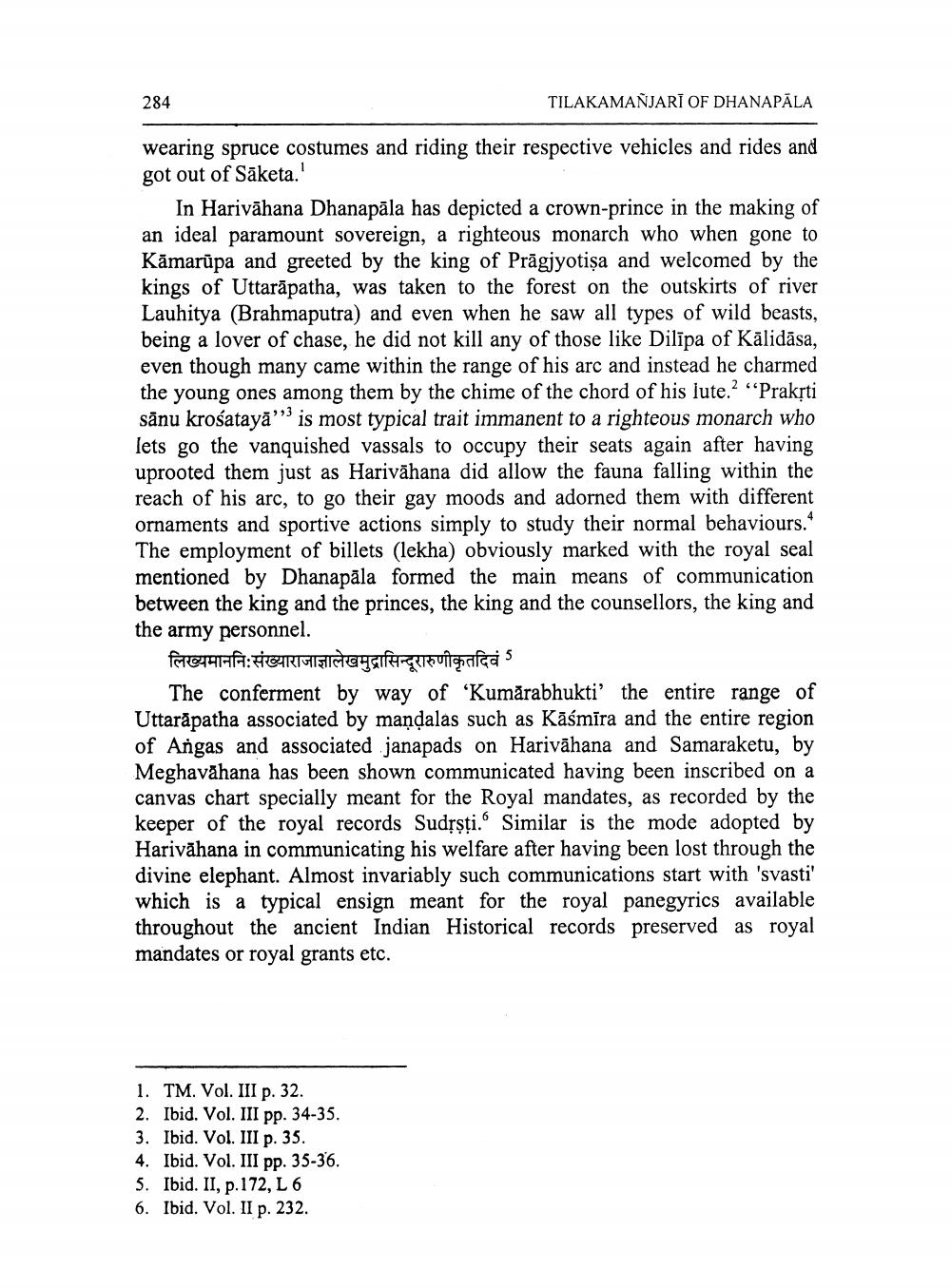________________
284
TILAKAMANJARĪ OF DHANAPALA
wearing spruce costumes and riding their respective vehicles and rides and got out of Saketa.'
In Harivahana Dhanapala has depicted a crown-prince in the making of an ideal paramount sovereign, a righteous monarch who when gone to Kāmarupa and greeted by the king of Pragjyotiṣa and welcomed by the kings of Uttarapatha, was taken to the forest on the outskirts of river Lauhitya (Brahmaputra) and even when he saw all types of wild beasts, being a lover of chase, he did not kill any of those like Dilīpa of Kālidāsa, even though many came within the range of his arc and instead he charmed the young ones among them by the chime of the chord of his lute.2 "Prakrti sānu krośatayā" is most typical trait immanent to a righteous monarch who lets go the vanquished vassals to occupy their seats again after having uprooted them just as Harivahana did allow the fauna falling within the reach of his arc, to go their gay moods and adorned them with different ornaments and sportive actions simply to study their normal behaviours." The employment of billets (lekha) obviously marked with the royal seal mentioned by Dhanapala formed the main means of communication between the king and the princes, the king and the counsellors, the king and the army personnel.
लिख्यमाननिःसंख्याराजाज्ञालेखमुद्रासिन्दूरारुणीकृतदिवं 5
The conferment by way of 'Kumārabhukti' the entire range of Uttarapatha associated by mandalas such as Kāśmira and the entire region of Angas and associated janapads on Harivahana and Samaraketu, by Meghavahana has been shown communicated having been inscribed on a canvas chart specially meant for the Royal mandates, as recorded by the keeper of the royal records Sudṛşti. Similar is the mode adopted by Harivahana in communicating his welfare after having been lost through the divine elephant. Almost invariably such communications start with 'svasti' which is a typical ensign meant for the royal panegyrics available throughout the ancient Indian Historical records preserved as royal mandates or royal grants etc.
1. TM. Vol. III p. 32.
2. Ibid. Vol. III pp. 34-35.
3. Ibid. Vol. III p. 35.
4. Ibid. Vol. III pp. 35-36.
5. Ibid. II, p.172, L 6
6. Ibid. Vol. II p. 232.




